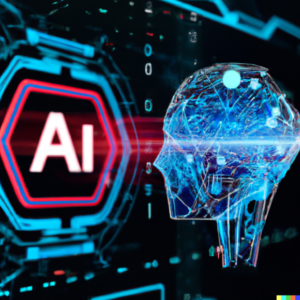Introduction
In the fast-evolving landscape of artificial intelligence (AI), OpenAI has emerged as a prominent player, captivating the imagination of researchers, developers, and the general public alike. Founded with the mission of ensuring that artificial general intelligence (AGI) benefits all of humanity, OpenAI has been at the forefront of AI research and development. This blog aims to unravel the complexities surrounding OpenAI, delving into the core concepts and technologies that define its innovative approach to AI.
The Mission of OpenAI
Central to understanding OpenAI is recognizing its overarching mission. OpenAI is not just another AI research lab; it is a visionary organization committed to preventing the concentration of power in the development and control of AGI. The mission is articulated in its Charter, emphasizing the principles of broadly distributed benefits, long-term safety, technical leadership, and cooperative orientation.
Core Concepts of OpenAI’s Approach
1.Artificial General Intelligence (AGI)
AGI refers to highly autonomous systems that possess the capability to outperform humans at most economically valuable work. Unlike narrow AI, which excels at specific tasks, AGI is designed to exhibit intelligence across a wide range of tasks, mirroring the versatility of human intelligence. OpenAI’s focus on AGI distinguishes it as an organization with a long-term perspective on the potential impact and challenges posed by advanced AI systems.
2.Generative Pre-trained Transformer (GPT) Models
At the heart of OpenAI’s breakthroughs in natural language processing lies the family of GPT models. Generative Pre-trained Transformer models are based on the transformer architecture and are pre-trained on vast datasets to generate human-like text. GPT-3, the third iteration of this series, boasts a staggering 175 billion parameters, enabling it to comprehend and generate contextually rich text across diverse domains.
3.Transfer Learning and Fine-tuning
Transfer learning is a key paradigm in OpenAI‘s methodology. Models like GPT-3 are pre-trained on extensive datasets, allowing them to grasp general language patterns and nuances. This knowledge is then fine-tuned for specific tasks or domains, making the models adaptable and efficient. Transfer learning reduces the need for enormous task-specific datasets, a significant advantage in real-world applications.
4.Reinforcement Learning
OpenAI employs reinforcement learning to train intelligent agents. In this paradigm, an agent learns by interacting with its environment and receiving feedback in the form of rewards or penalties. Reinforcement learning is pivotal in enabling machines to make decisions and take actions in dynamic and uncertain environments, a crucial aspect of achieving AGI.
5.Neural Architecture Search (NAS)
Neural Architecture Search is a cutting-edge technique explored by OpenAI to automate the design of neural network architectures. NAS involves searching through a vast space of possible architectures to identify configurations that excel at specific tasks. By automating this process, OpenAI accelerates the development of novel and efficient neural network structures.
6.Ethical Considerations and Research Policies
OpenAI is not solely focused on technological advancements; it places a strong emphasis on ethical considerations and responsible AI development. The organization actively engages in research and policy discussions to address concerns related to the societal impact of AI. OpenAI is committed to avoiding uses of AI or AGI that could harm humanity or unduly concentrate power, emphasizing the importance of transparency and safety in AI research.
Exploring OpenAI’s Impact
1.Language Understanding and Generation
OpenAI’s GPT models have revolutionized language understanding and generation. From content creation to chatbots and language translation, the applications are diverse. OpenAI’s models have demonstrated an unprecedented ability to understand context, answer questions, and even generate creative content.
2.AI in Creativity and Art
OpenAI’s impact extends beyond traditional applications, with forays into the realm of creativity and art. Projects like DALL-E showcase the potential of AI to generate unique and imaginative visual content, opening new avenues for collaboration between human creativity and machine intelligence.
3.AI in Healthcare and Sciences
OpenAI’s technologies are making inroads into the healthcare and scientific domains. From natural language interfaces for medical professionals to aiding in scientific research by processing vast amounts of textual data, OpenAI’s contributions are poised to reshape these critical sectors.
4.AI in Education
Education is another arena where OpenAI’s technologies show promise. The ability of models like GPT-3 to generate coherent and contextually relevant content can be harnessed to create personalized educational materials, chatbots for student assistance, and even virtual tutors.
Challenges and Criticisms
Despite its significant contributions, OpenAI is not without its challenges and criticisms. The enormous computational resources required for training models like GPT-3 raise concerns about environmental impact and accessibility. The potential biases present in large language models also pose ethical challenges that OpenAI actively acknowledges and works to address.
The Future of OpenAI
As OpenAI continues to evolve, the future promises even more exciting developments. Ongoing research into making AI systems safer, more robust, and ethical remains a top priority. OpenAI’s commitment to providing public goods, sharing research, and collaborating with the global community positions it as a key player in shaping the future of AI in a responsible and inclusive manner.
Conclusion
Demystifying OpenAI involves unraveling not only the technical intricacies of its core concepts and technologies but also understanding the organization’s ethos and impact. OpenAI’s journey is marked by a dedication to ensuring the responsible development and deployment of artificial general intelligence. As we navigate the complexities of AI, OpenAI stands as a guiding force, pushing the boundaries of what is possible while steadfastly adhering to the principles that will shape the future of AI for the benefit of all humanity.
Did you Know: Growth Leaders Consulting also offers complete expertise in Digital Marketing Services?
About The Author: Kunal Pandit is a marketing professional with over 20 years of extensive experience in the telecom industry in India. Holding an MBA degree from Symbiosis, Pune, Kunal has occupied senior management positions in sales and marketing domains. For the last three years, Kunal has been successfully running his own digital marketing and business consulting company.


